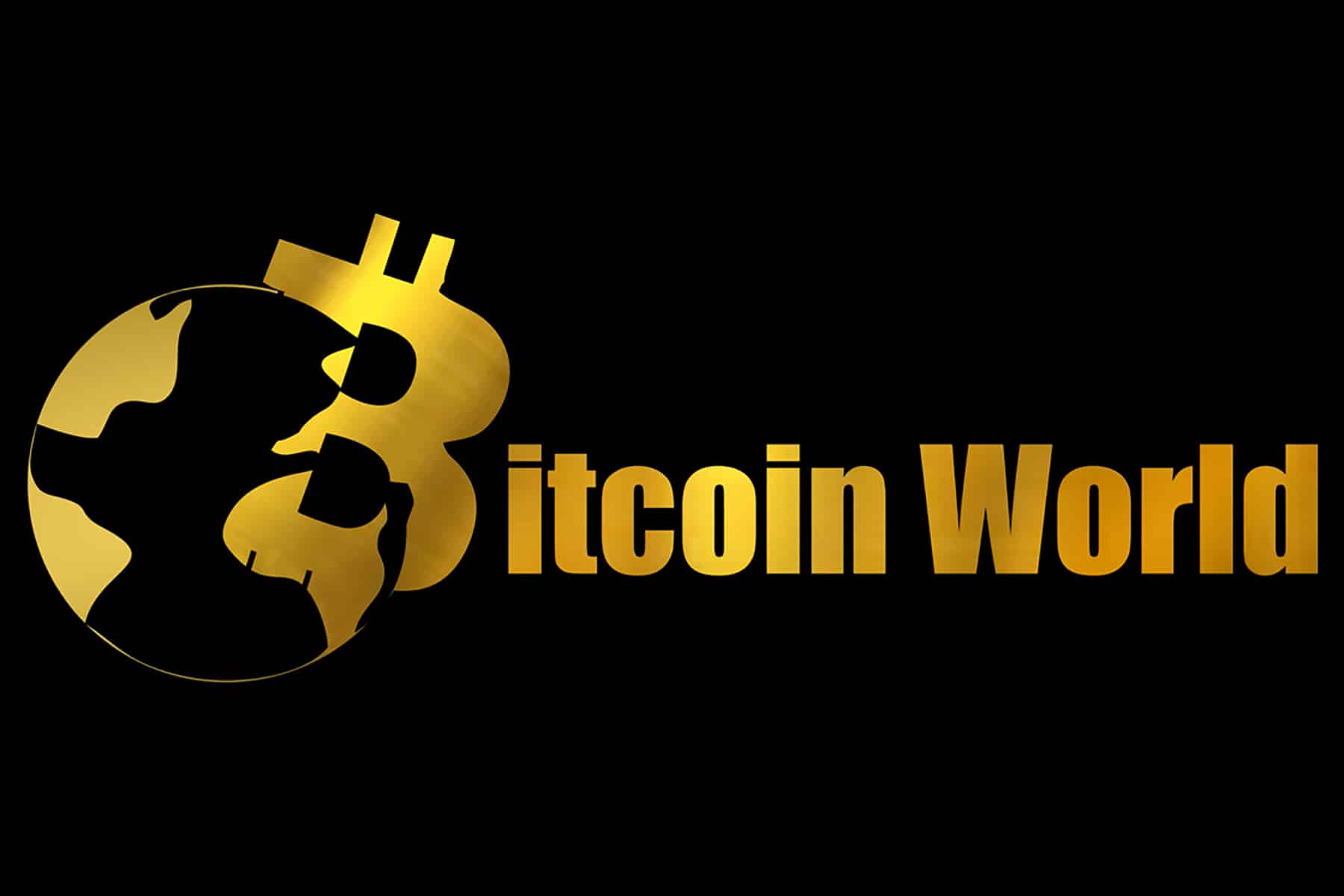BitcoinWorld

Thumzup Unleashes $250M Crypto Treasury: A Bold Institutional Digital Asset Strategy
In a move that’s sending ripples across both the traditional financial markets and the burgeoning digital asset space, Thumzup Media Corporation, a Nasdaq-listed entity known for its branding and social media marketing prowess, has just made a groundbreaking announcement. Imagine a company, rooted in the conventional stock exchange, making a massive leap into the future of finance. That’s exactly what Thumzup has done, signaling a significant shift in corporate treasury strategies and cementing its position at the forefront of institutional crypto adoption. This isn’t just about holding a few digital tokens; it’s a strategic embrace of a new financial paradigm, authorized by its Board of Directors to the tune of a quarter of a billion dollars in cryptocurrencies.
Unpacking Thumzup’s Bold Digital Asset Strategy: What Does $250 Million Really Mean?
The core of Thumzup’s recent announcement, delivered via PR Newswire, revolves around a staggering authorization: its Board of Directors has given the green light to hold up to $250 million in cryptocurrencies. This isn’t a speculative venture into a single digital currency; it’s a meticulously planned expansion of their digital asset strategy, which initially began with a focus solely on Bitcoin (BTC). The evolution of their approach is evident in the newly approved roster of digital assets, designed to diversify their crypto treasury beyond just the king of cryptocurrencies. This expanded list now includes:
- Ether (ETH): The native cryptocurrency of the Ethereum blockchain, powering decentralized applications and smart contracts.
- Solana (SOL): Known for its high throughput and low transaction costs, a rising star in the blockchain ecosystem.
- Ripple (XRP): A digital asset designed for fast, low-cost international payments.
- Dogecoin (DOGE): The popular meme coin, which has garnered significant community support and mainstream attention.
- Litecoin (LTC): Often referred to as “digital silver,” a peer-to-peer cryptocurrency.
- USDC: A stablecoin pegged to the U.S. dollar, offering stability within the volatile crypto market.
This diversification underscores a nuanced understanding of the crypto market, aiming to balance potential growth with some level of stability through USDC. Furthermore, this bold move builds upon a previously disclosed, equally ambitious plan: the company had already committed to allowing up to 90% of its liquid assets to be held in Bitcoin (BTC). This indicates a deep conviction in Bitcoin’s role as a store of value and a hedge against inflation, positioning it as a foundational element of their overall financial strategy. It’s a clear signal that Thumzup views these digital assets not just as an investment opportunity, but as a legitimate and significant component of their corporate balance sheet, akin to traditional financial instruments.
Why the Shift? Understanding the Crypto Treasury Imperative
Why would a Nasdaq-listed firm like Thumzup, operating in the traditional branding and marketing space, pivot so decisively towards digital assets? The decision to authorize a substantial crypto treasury strategy is not made lightly. It reflects a growing trend among forward-thinking corporations to re-evaluate traditional financial paradigms in the face of evolving global economic conditions. Several compelling factors are driving this shift:
- Inflation Hedge: With global inflation concerns rising, many companies are seeking alternative assets that can preserve or even grow purchasing power. Bitcoin, often dubbed “digital gold,” is increasingly seen as a robust hedge against fiat currency debasement due to its fixed supply.
- Diversification of Assets: Traditional treasury strategies often rely heavily on cash, short-term government bonds, and other low-yield instruments. Introducing cryptocurrencies offers a new avenue for diversification, potentially enhancing overall portfolio returns while mitigating risks associated with over-reliance on a single asset class.
- Growth Potential: The cryptocurrency market, despite its volatility, has demonstrated unprecedented growth over the past decade. Companies are looking to capitalize on this growth potential, viewing strategic allocations as a way to boost shareholder value.
- Embracing Innovation and Future-Proofing: For a branding and social media marketing firm like Thumzup, being at the forefront of technological innovation is crucial. Embracing digital assets signals a progressive mindset, aligning the company with emerging technologies and potentially attracting a new generation of talent and clients who are digitally native.
- Yield Opportunities: Beyond simply holding, some digital assets offer opportunities for yield generation through staking, lending, or decentralized finance (DeFi) protocols, though this often comes with higher risk. While Thumzup’s initial announcement focuses on holding, the broader ecosystem presents various avenues for potential returns.
This strategic pivot suggests Thumzup’s leadership believes that a diversified treasury, including a significant allocation to digital assets, is essential for long-term financial health and competitive advantage in a rapidly changing global economy.
The Rise of Institutional Crypto Adoption: A New Era?
Thumzup’s decision isn’t an isolated incident; it’s part of a much larger, accelerating trend: the increasing embrace of institutional crypto adoption. For years, cryptocurrencies were primarily the domain of retail investors and tech enthusiasts. However, that narrative has dramatically shifted. Major corporations, investment funds, and even sovereign wealth funds are now actively exploring or implementing strategies to incorporate digital assets into their portfolios.
Consider the precedents set by companies like MicroStrategy, which has famously accumulated billions of dollars in Bitcoin, or Tesla, which briefly held a significant amount of BTC on its balance sheet. These early movers paved the way, demonstrating that it’s not just feasible but potentially advantageous for public companies to hold cryptocurrencies. The benefits of this growing institutional interest are manifold:
- Legitimacy and Mainstream Acceptance: When Nasdaq-listed companies and established financial institutions enter the crypto space, it lends immense credibility to the asset class, helping to dispel lingering doubts about its long-term viability.
- Market Maturation: Institutional capital brings greater liquidity, depth, and potentially reduced volatility to the market. Their entry often coincides with the development of more robust infrastructure, such as regulated custody solutions and derivatives markets, which further professionalizes the space.
- New Financial Products and Services: As institutions become more involved, we see the proliferation of crypto-backed financial products like ETFs, mutual funds, and structured products, making digital assets more accessible to a broader range of investors.
- Regulatory Clarity: The presence of large, regulated entities often prompts governments and regulators to develop clearer frameworks for digital assets, which is crucial for the industry’s sustainable growth.
Thumzup’s move adds another significant data point to this trend, reinforcing the idea that digital assets are no longer a niche investment but are becoming an integral part of modern corporate finance. It signals confidence in the underlying technology and the future potential of decentralized economies.
Navigating the Volatility: Risks and Considerations for Bitcoin Holdings and Beyond
While the prospect of significant returns and strategic diversification makes Bitcoin holdings and other digital assets attractive, it’s crucial to acknowledge the inherent risks. The cryptocurrency market is notorious for its volatility, which can lead to rapid and substantial price swings. For a public company like Thumzup, managing these risks is paramount to protecting shareholder value and maintaining financial stability. Key considerations include:
- Market Volatility: Unlike traditional assets, cryptocurrencies can experience daily fluctuations of 10% or more, both upwards and downwards. This volatility can impact a company’s balance sheet and reported earnings, potentially leading to significant paper losses during downturns.
- Regulatory Uncertainty: The regulatory landscape for cryptocurrencies remains fragmented and evolving across different jurisdictions. Changes in regulations, potential bans, or new tax treatments could significantly impact the value and usability of digital assets.
- Security Risks: Holding large amounts of cryptocurrency necessitates robust security measures against hacking, theft, and loss of private keys. Companies must invest in state-of-the-art custody solutions, whether self-custodied or through third-party institutional custodians.
- Accounting and Reporting Challenges: The accounting treatment for cryptocurrencies can be complex, often requiring companies to mark assets to market, which can introduce volatility into financial statements.
- Public Perception: While institutional adoption is growing, some traditional investors and stakeholders may still view crypto investments with skepticism, potentially impacting investor confidence or public relations.
Thumzup’s decision to include a stablecoin like USDC in its portfolio suggests an awareness of these risks and an attempt to mitigate some of the extreme volatility. Their 90% liquid assets in BTC plan also indicates a long-term, HODL-like strategy, suggesting they are prepared to weather market fluctuations rather than engage in short-term trading. Responsible management of these digital assets will be key to the success of their ambitious treasury strategy.
What Does This Mean for the Market and Future of Thumzup Crypto?
The authorization of up to $250 million in Thumzup crypto holdings carries significant implications, not just for the company but for the broader cryptocurrency ecosystem. For Thumzup, this move positions them as a pioneer among Nasdaq-listed branding and social media marketing firms. It could:
- Enhance Brand Image: Aligning with cutting-edge technology and financial innovation could attract tech-savvy clients and a younger demographic, bolstering their brand reputation in a competitive industry.
- Potential for Capital Appreciation: If the cryptocurrency market continues its long-term upward trajectory, Thumzup’s substantial holdings could significantly boost its balance sheet and shareholder value.
- Attract New Investors: Crypto-focused investors might view Thumzup as an attractive stock, given its significant exposure to digital assets, potentially expanding its investor base.
For the cryptocurrency market, Thumzup’s investment further validates the asset class. Each time a traditional company makes such a substantial commitment, it:
- Increases Market Capitalization: Direct purchases by corporations remove supply from the open market, potentially contributing to price appreciation and overall market growth.
- Signals Broader Acceptance: It encourages other hesitant corporations to consider similar strategies, creating a snowball effect of institutional adoption.
- Strengthens Ecosystem: The demand for diversified digital assets beyond Bitcoin, as evidenced by Thumzup’s expanded list (ETH, SOL, XRP, DOGE, LTC, USDC), supports the development and liquidity of various blockchain networks.
This is a testament to the increasing confidence in the fundamental value and utility of digital assets. Thumzup’s foray into this space could serve as a blueprint for other companies looking to future-proof their treasuries and participate in the digital economy.
The Road Ahead: Actionable Insights for Investors and Corporations
Thumzup’s bold step into the crypto world offers valuable lessons for both individual investors and other corporations contemplating similar moves. For companies, the message is clear: the traditional treasury playbook is evolving. It’s no longer just about cash and bonds; a diversified portfolio that includes digital assets is becoming a viable, and for some, a necessary component of modern financial strategy. Corporations should:
- Conduct Thorough Due Diligence: Understand the specific risks and opportunities associated with each digital asset.
- Develop a Clear Strategy: Define investment goals, risk tolerance, and allocation percentages before making any commitments.
- Prioritize Security: Implement robust custody solutions and cybersecurity protocols to protect digital assets.
- Stay Informed on Regulations: The regulatory landscape is dynamic; continuous monitoring is essential for compliance and risk management.
- Consider Diversification: While Bitcoin often leads, exploring a basket of reputable altcoins and stablecoins can help manage risk and capture broader market opportunities.
For individual investors, Thumzup’s move is a powerful signal. It suggests that institutional money is increasingly flowing into the crypto space, which could lead to long-term price stability and growth. However, it also reinforces the need for individual investors to:
- Research Extensively: Don’t just follow institutional trends blindly. Understand the technology, use cases, and market dynamics of the cryptocurrencies you invest in.
- Manage Risk: Only invest what you can afford to lose, and consider dollar-cost averaging to mitigate volatility.
- Think Long-Term: Institutional moves often reflect a long-term vision. Short-term speculation remains highly risky.
The convergence of traditional finance and digital assets is no longer a distant dream but a present reality, exemplified by Thumzup’s proactive approach.
Thumzup Media Corporation’s authorization to hold up to $250 million in cryptocurrencies marks a pivotal moment, not just for the company but for the broader financial landscape. By expanding its crypto treasury strategy to include a diverse range of digital assets from Bitcoin and Ethereum to Solana, Ripple, Dogecoin, Litecoin, and USDC, Thumzup is demonstrating a forward-thinking approach to corporate finance. This strategic pivot underscores a growing institutional confidence in digital assets as legitimate components of a diversified balance sheet, serving as potential inflation hedges, growth drivers, and symbols of innovation. While the inherent volatility and regulatory uncertainties of the crypto market present challenges, Thumzup’s move highlights a growing trend of corporations embracing these assets to future-proof their financial strategies. As more companies follow suit, the lines between traditional finance and the decentralized digital economy will continue to blur, ushering in a new era of investment and corporate treasury management. Thumzup is not just investing in crypto; it’s investing in the future of finance itself.
To learn more about the latest crypto market trends and institutional adoption, explore our article on key developments shaping Bitcoin and Ethereum’s institutional price action.
This post Thumzup Unleashes $250M Crypto Treasury: A Bold Institutional Digital Asset Strategy first appeared on BitcoinWorld and is written by Editorial Team




